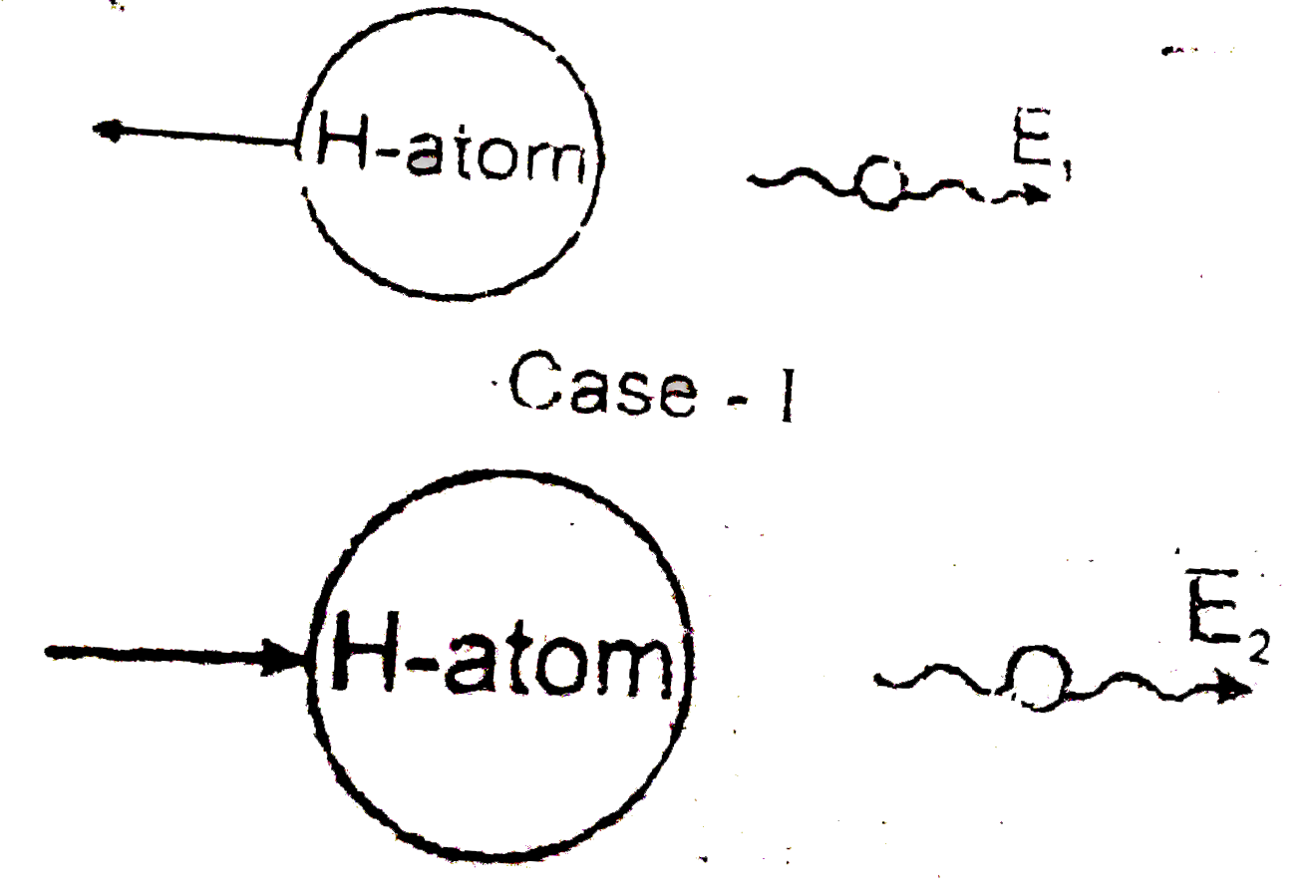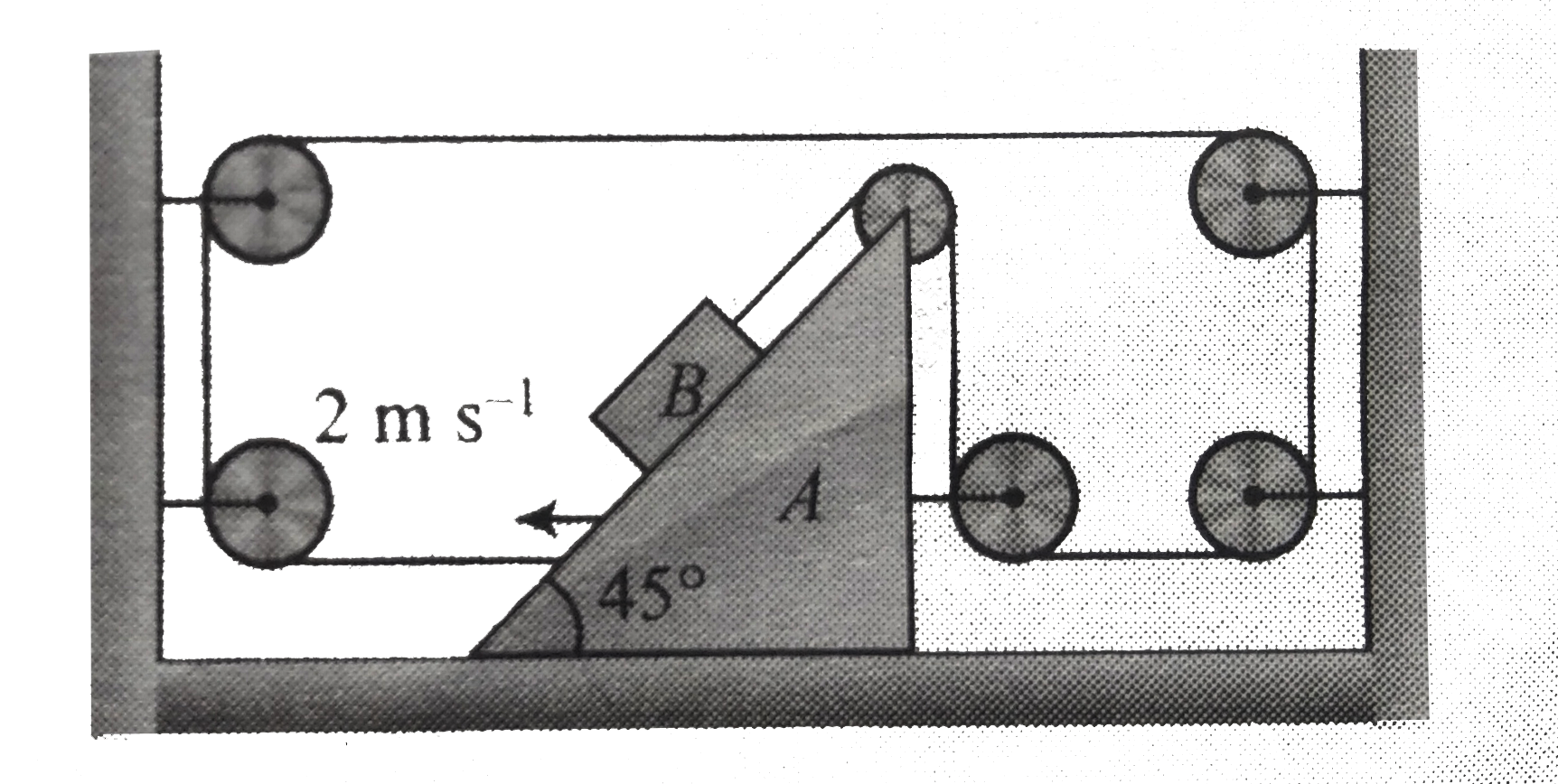Two hydrogen atoms are in excited state with electrons residing in n=2. First one is moving towards left and emits a photon of energy E1 towards right. Second one is moving twoards left with same speed and emits a photon of energy E2 towards left. Taking recoil of nucleus into account during emission process
E1>E2
E1<E2
E1=E2
information insufficient
The correct Answer is:B

In the first case K.E of H-atom increase due to recoil whereas in the second case K.E decreases due to recoil
∴E2>E1.
Topper's Solved these Questions
- BOOK - RESONANCE ENGLISHCHAPTER - DAILY PRACTICE PROBLEMEXERCISE - DPP No.349videos
DAILY PRACTICE PROBLEM
- BOOK - RESONANCE ENGLISHCHAPTER - DAILY PRACTICE PROBLEMEXERCISE - DPP No.3520videos
DAILY PRACTICE PROBLEM
- BOOK - RESONANCE ENGLISHCHAPTER - DAILY PRACTICE PROBLEMEXERCISE - DPP No.329videos
DAILY PRACTICE PROBLEM
- BOOK - RESONANCE ENGLISHCHAPTER - CURRENT ELECTRICITYEXERCISE - High Level Problems (HIP)19videos
CURRENT ELECTRICITY
- BOOK - RESONANCE ENGLISHCHAPTER - ELECTRO MAGNETIC WAVESEXERCISE - Exercise 327videos
ELECTRO MAGNETIC WAVES
Similar Questions
Two hydrogen atoms are in excited state with electrons inn=2 state.First one is moving to wards left and emits a photon.' of energy E1 towards right. Second one is moving towards right with same speed and emits a photon of energy E2 towards right. Taking recoil of nucleus.into account during_emission process :
View SolutionSystem is shown in fig. and wedge is moving toward left with speed 2ms−1. Find the velocity of the block B.
 View Solution
View SolutionA stationary hydrogen atom in the first excited state emits a photon. If the mass of the hydrogen atom is m and its ionization energy is E, then the recoil velocity acquired by the atom is [speed of light = c]
View SolutionGround state energy of H-atom is (−E1),t he velocity of photoelectrons emitted when photon of energy E2 strikes stationary Li2+ ion in ground state will be:
View SolutionElectron in hydrogen atom first jumps from third excited state to second excited state and then form second excited state to first excited state. The ratio of wavelength λ1:λ2 emitted in two cases is
View SolutionThe electron in a hydrogen atom at rest makes a transition from n=2 energy state to the n=1 ground state.
find the energy (eV) of the emitted photon.View SolutionA hydrogen atom in a state of binding energy 0.85 eV makes a transition to a state of excitation energy of 10.2 eV . Find the energy and wavelength of photon emitted.
View SolutionA hydrogen atom in a state of binding energy 0.85 eV makes a transition to a state of excitation energy of 10.2 eV . Find the energy and wavelength of photon emitted.
View SolutionBinding energy per nucleon of fixed nucleus XA is 6MeV. It absorbs a neutron moving with KE=2MeV and converts into Y at ground state, emitting a photon of energy 1MeV. The Binding energy per nucleon of Y (in MeV) is -
View SolutionA hydrogen like atom with atomic number Z is in an excited state of quantum number 2n. It can emit a maximum energy photon of 204 eV. If it makes a transition ot quantum state n, a photon of energy 40.8 eV is emitted. Find n, Z and the ground state energy (in eV) of this atom. Also calculate the minimum energy (in eV) that can be emitted by this atom during de-excitation. Ground state energy of hydrogen atom is – 13. 6 eV.
View Solution

